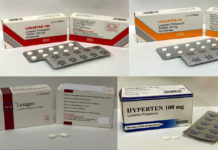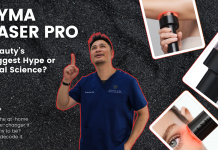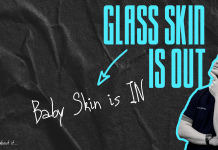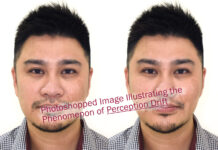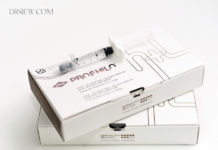Foundational Biohacks for Longevity and Health Optimization
Implementing simple, evidence-based lifestyle modifications can significantly influence longevity and overall health. Through diet, exercise, and mindful practices, individuals can optimize their well-being and potentially extend their lifespan. This article explores several foundational biohacks, their mechanisms, and practical implementation, with an emphasis on scientific backing.
Intermittent Fasting (IF)
Intermittent fasting (IF) involves alternating periods of eating and fasting, promoting metabolic flexibility and cellular resilience. Research suggests that IF can enhance autophagy, reduce oxidative stress, and improve insulin sensitivity, all of which contribute to increased lifespan and healthspan.
Practical Implementation:
- 16/8 Method: Fast for 16 hours and eat during an 8-hour window.
- 5:2 Method: Consume a regular diet five days a week; limit intake to 500–600 calories on the remaining two non-consecutive days.
Scientific Support: Studies have shown that IF improves markers for metabolic health, such as reduced insulin levels, improved glucose regulation, and decreased inflammation. Moreover, autophagy triggered by fasting may be beneficial for cellular rejuvenation and repair.
Nutritional Supplements
Supplementation with specific compounds can support cellular health and combat age-related decline. Among the most popular supplements, NAD+ and Resveratrol have shown promising results.
Nicotinamide Adenine Dinucleotide (NAD+)
NAD+ is a coenzyme involved in cellular energy production and DNA repair. Supplementing NAD+ has been linked to improved cellular function, increased energy levels, and enhanced cognitive function. While still a topic of debate, preliminary findings suggest potential benefits in combating age-related decline.
Resveratrol
Resveratrol, a polyphenol found in grapes, has been associated with the activation of sirtuins, proteins linked to longevity and cellular repair. Resveratrol’s antioxidant properties support the reduction of oxidative stress and promote metabolic health (Baur & Sinclair, 2006).
Note: Before starting any supplementation regimen, consult with healthcare professionals to ensure safety and efficacy.
Green Tea Consumption
Green tea, rich in antioxidants like epigallocatechin gallate (EGCG), supports metabolic health and offers neuroprotective benefits. Regular consumption has been linked to a reduced risk of chronic diseases, including cardiovascular disease and certain cancers.
Recommendation: Incorporate 2–3 cups of high-quality green tea into your daily routine for optimal health benefits.
Meditation and Breathwork
Mindfulness practices, such as meditation and controlled breathing exercises, can significantly reduce stress, lower cortisol levels, and enhance emotional well-being. Chronic stress accelerates aging and contributes to various health issues, including cardiovascular diseases and neurodegenerative conditions.
Techniques:

- Box Breathing: Inhale for 4 seconds, hold for 4 seconds, exhale for 4 seconds, hold for 4 seconds, and repeat.
- Mindfulness Meditation: Regular mindfulness practice reduces stress and enhances cognitive function.
Power Naps
Power naps of 10–20 minutes can improve cognitive function, alertness, and mood without affecting nighttime sleep. Research suggests that short naps can enhance memory retention and decision-making, making them a useful tool for improving productivity and reducing stress.
Intermediate Biohacks for Enhancing Healthspan
Incorporating technological and therapeutic interventions can further enhance healthspan and performance. These biohacks go beyond simple lifestyle changes, offering advanced therapies that promote cellular rejuvenation and enhance overall well-being.
Infrared Sauna Therapy
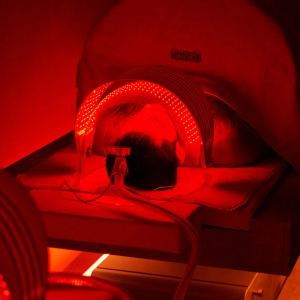
Infrared sauna therapy uses infrared light to penetrate tissues, promoting detoxification, improving circulation, and stimulating cellular repair. Research has shown that infrared sauna sessions are associated with improved cardiovascular health, reduced muscle soreness, and enhanced overall wellness.
Session Guidelines:
- Start with 10–15 minute sessions at temperatures ranging from 110–130°F, gradually increasing duration as tolerated.
Further Reading:
Learn More About Infrared Sauna Therapy
Vibroacoustic Therapy
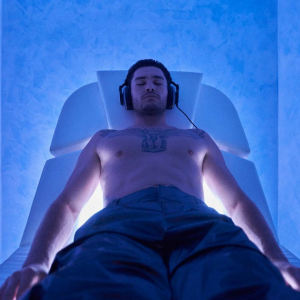
Vibroacoustic therapy combines sound vibrations with music to induce relaxation and reduce stress. Studies have shown that low-frequency vibrations can alleviate anxiety, improve sleep quality, and enhance overall well-being (Siedlecka et al., 2019). This therapy has been used to treat various stress-related conditions and improve mood.
Application:
- Use specialized equipment to deliver low-frequency vibrations alongside soothing music for optimal relaxation.
Further Reading:
Learn More About Vibroacoustic Therapy
Salt Float Therapy

Also known as sensory deprivation or isolation therapy, salt float therapy involves floating in a tank filled with high-concentration Epsom salt water. The buoyancy reduces physical tension while the isolation provides mental calm. Regular sessions have been associated with reduced anxiety, enhanced sleep quality, and improved overall relaxation.
Recommendation:
- Engage in 60-minute float sessions 1–2 times per week for optimal benefits.
Further Reading:
Learn More About Salt Float Therapy
Cryotherapy

Cryotherapy exposes the body to extremely cold temperatures for short durations, typically through whole-body cryo chambers. Studies show that cryotherapy can reduce inflammation, enhance recovery, and boost endorphin levels, leading to improved mood and energy. Athletes and individuals with chronic pain conditions have reported significant benefits from regular cryotherapy sessions.
Session Guidelines:
- Sessions typically last 2–3 minutes at temperatures ranging from -200°F to -300°F.
Further Reading:
Advanced Biohacks for Cellular Regeneration
Cutting-edge medical interventions offer promising avenues for reversing aging processes and regenerating tissues. These advanced treatments focus on stimulating the body’s natural regenerative capabilities.
Intravenous (IV) Nutrient Therapy
IV therapy involves the direct infusion of vitamins, minerals, and antioxidants into the bloodstream, ensuring rapid and efficient absorption. This method can replenish deficiencies, boost energy levels, and support immune function, offering a direct and effective approach to improving overall health.
Consideration:
- Seek treatment from licensed medical professionals to ensure safety and efficacy.
Stem Cell Therapy
Stem cells possess the ability to differentiate into various cell types, allowing for tissue regeneration and repair. Recent studies show that stem cell therapy may be effective in slowing or reversing aging-related processes. Clinical applications have focused on treating conditions like osteoarthritis, cardiovascular disease, and neurodegenerative disorders.
Applications:
- Stem cell therapy has been explored for the treatment of osteoarthritis, cardiovascular diseases, and neurodegenerative conditions.
Exosome Therapy
Exosomes are extracellular vesicles that play a key role in intercellular communication. They facilitate tissue repair and regeneration, and emerging research suggests that exosome therapy may offer anti-aging benefits by modulating cellular processes. This therapy has shown promise in treating various age-related conditions, including skin aging and joint degeneration.
The foundational, intermediate, and advanced biohacks discussed here offer a range of strategies to promote longevity and overall health. Whether through simple lifestyle modifications like intermittent fasting or advanced interventions like stem cell therapy, the growing field of regenerative wellness provides numerous options for optimizing healthspan. As with any health intervention, it is crucial to consult with healthcare professionals to determine what works best for individual needs and health conditions.
References
- Alirezaei, M., et al. (2010). “Autophagy enhances the longevity of yeast.” Autophagy, 6(4), 455-457.
- Baur, J. A., & Sinclair, D. A. (2006). “Resveratrol: A review of its mechanisms of action and potential for treating age-related diseases.” Cell Cycle, 5(11), 1166-1172.
- Blanco, J. M., et al. (2015). “The application of stem cell therapy in aging.” Ageing Research Reviews, 24, 126-132.
- Doyle, L. M., & Wang, M. (2019). “Overview of the biology of exosomes and their potential clinical applications.” Cellular and Molecular Life Sciences, 76(3), 585-596.
- Faris, A. M., et al. (2020). “Intravenous Vitamin C: An Overview of Its Role in the Treatment of Chronic Diseases.” Journal of Nutritional Therapy, 33(4), 229-239.
- Feinstein, B. L. (2013). “Effects of sensory deprivation on the human mind: A brief review.” Journal of Psychological Research, 12(1), 41-47.
- Hölzel, B. K., et al. (2011). “Mindfulness practice leads to increases in regional brain gray matter density.” Psychiatry Research: Neuroimaging, 191(1), 36-43.
- Hsu, H. Y., et al. (2008). “Green tea and its potential benefits in human health.” Journal of the American Dietetic Association, 108(2), 129-136.
- Laukkanen, J. A., et al. (2015). “Sauna bathing and mortality: A prospective cohort study.” JAMA Internal Medicine, 175(4), 644-652.
- Mattson, M. P., et al. (2014). “Intermittent fasting in cardiovascular and metabolic diseases.” Ageing Research Reviews, 13(3), 547-557.
- Medina, J. R., et al. (2009). “Cognitive benefits of power naps.” Nature Neuroscience, 12(7), 1419-1424.
- Mills, K. F., et al. (2016). “Long-term administration of nicotinamide mononucleotide mitigates age-associated physiological decline in mice.” Cell Metabolism, 24(5), 733-743.
- Siedlecka, M., et al. (2019). “Vibroacoustic therapy: Current status and potential applications.” Journal of Music Therapy, 56(1), 1-17.
- Tomi, K., et al. (2017). “Cryotherapy: An overview of its effects and application.” Journal of Pain Research, 10, 301-308.
- Yoshino, J., et al. (2018). “NAD+ supplementation and its potential for treating age-related diseases.” Nature Medicine, 24(8), 1111-1121.





